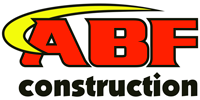
The Ultimate Guide to Commercial Tenant Improvements
Introduction
Commercial tenant improvements (TI) are crucial for businesses looking to tailor their leased spaces to meet specific operational needs. Whether you’re setting up a new office, renovating a retail space, or upgrading a warehouse, understanding the process of tenant improvements can make a significant difference in both functionality and aesthetics.
At ABF Construction, Inc., we’ve spent over 30 years perfecting the art of commercial tenant improvements. Our experience across Southern California has taught us that a well-planned TI project not only enhances the space but also boosts productivity and client satisfaction. In this guide, we’ll walk you through everything you need to know about commercial tenant improvements, from understanding the basics to negotiating the best deals.
Section 1: Understanding Commercial Tenant Improvements
What Are Commercial Tenant Improvements?
Commercial tenant improvements, also known as leasehold improvements or build-outs, involve making alterations to a leased space to suit the tenant’s business needs. These changes can range from simple updates like repainting and installing new flooring to extensive renovations such as reconfiguring layouts, upgrading HVAC systems, and installing advanced technology infrastructure.
At ABF Construction, Inc., we specialize in providing tailored solutions that meet the specific needs of each tenant, ensuring that the space is both functional and reflective of the tenant’s brand.
Why Are Commercial Tenant Improvements Important?
For landlords, well-executed tenant improvements can attract high-quality tenants and increase property value. For tenants, these improvements are essential for creating a workspace that enhances productivity and meets business objectives.
For instance, a poorly designed space can lead to operational inefficiencies, impacting employee morale and customer experience. On the other hand, a space tailored to your needs can significantly boost your business’s day-to-day operations.
Section 2: Types of Commercial Tenant Improvements
Tenant Improvement Allowance (TIA)
A Tenant Improvement Allowance (TIA) is a sum of money provided by the landlord to help cover the cost of tenant improvements. This is the most common type of agreement, where the tenant oversees the work and ensures the space meets their needs.
Pros:
- Tenants have control over the renovations, reducing the likelihood of quality issues.
- Flexibility in choosing contractors and materials.
Cons:
- Managing renovations can be time-consuming and may require additional resources.
Rent Discounts
In this arrangement, the landlord offers reduced or free rent for a specified period to offset the cost of improvements. The tenant typically oversees the renovations.
Pros:
- Immediate financial relief through rent reductions.
- Tenants maintain control over the renovation process.
Cons:
- Landlords may increase rent after the improvements to recover costs, potentially leading to higher long-term expenses.
Building Standard Allowance (Buildout)
The landlord provides a standard package of improvements, and the tenant can select from these options. The landlord oversees the work, and any additional improvements are paid for by the tenant.
Pros:
- Tenants do not need to manage the renovation process.
- Lower initial out-of-pocket costs for tenants.
Cons:
- Limited customization options may not fully meet the tenant’s needs.
Turnkey
In a turnkey agreement, the tenant provides a design plan, and the landlord covers all improvement costs and manages the construction.
Pros:
- Tenants have minimal involvement, making it a convenient option.
- The landlord assumes responsibility for the renovation’s success.
Cons:
- Limited input from tenants can lead to compromises in design and functionality.
Custom Agreements
Sometimes, landlords and tenants may agree on a custom arrangement that blends aspects of the above types. This flexibility allows both parties to create a tailored solution that best fits their needs.
Section 3: Key Considerations for Commercial Tenant Improvements
Budgeting for Tenant Improvements
Budgeting is a critical component of any tenant improvement project. At ABF Construction, Inc., we recommend starting with a detailed cost estimate that includes materials, labor, permits, and design fees. Unexpected costs can arise, so it’s wise to allocate extra funds for contingencies.
Navigating Tenant Improvement Allowances
When negotiating a TI allowance, factors such as lease length, property location, and market conditions can significantly impact the amount you receive. At ABF Construction, Inc., we help our clients understand these factors and negotiate the best possible allowance to ensure their project is financially viable.
Legal and Compliance Issues
Compliance with local building codes and regulations is essential. Failure to obtain the necessary permits can lead to costly fines and delays. ABF Construction, Inc.’s expertise in navigating these legal requirements ensures that your project stays on track and within the law.
Section 4: Popular Commercial Tenant Improvements
Technology Upgrades
In today’s digital age, technology upgrades are among the most sought-after tenant improvements. This can include installing advanced IT infrastructure, energy-efficient HVAC systems, and state-of-the-art security systems. These upgrades not only improve the functionality of the space but also enhance its appeal to modern businesses.
Aesthetic Modifications
Aesthetic changes, such as custom lighting, new flooring, and branded design elements, play a crucial role in creating a welcoming and professional environment. These modifications help businesses reflect their brand identity and create a positive impression on clients and employees.
Functional Layouts
Reconfiguring the layout of a space can significantly improve workflow and productivity. Whether it’s creating open-plan offices or adding private meeting rooms, ABF Construction, Inc. specializes in designing functional layouts that meet the unique needs of each business.
Sustainable Solutions
Sustainability is becoming increasingly important in commercial tenant improvements. Green initiatives, such as installing solar panels, low-flow plumbing fixtures, and green roofs, not only reduce environmental impact but also lower operating costs.
Section 5: How to Implement Commercial Tenant Improvements Successfully
Step 1: Assessment & Planning
The first step in any successful tenant improvement project is a thorough assessment. This involves understanding the tenant’s operational requirements, space functionality, and aesthetic preferences. At ABF Construction, Inc., we work closely with our clients to create a comprehensive plan that addresses all aspects of the project.
Step 2: Budgeting
A well-defined budget is crucial to the success of any tenant improvement project. This should include all costs associated with the project, from design and materials to permits and labor. ABF Construction, Inc. provides detailed cost estimates and works with clients to ensure their project stays within budget.
Step 3: Hiring the Right Professionals
Hiring experienced architects and contractors is essential for ensuring the quality and efficiency of your project. ABF Construction, Inc.’s team of skilled professionals brings decades of experience to each project, ensuring that every detail is executed to the highest standards.
Step 4: Obtaining Permits
Before any construction work begins, it’s essential to obtain the necessary permits. ABF Construction, Inc.’s expertise in local building codes and regulations ensures that all permits are secured, preventing potential legal issues and delays.
Step 5: Construction & Project Management
Effective project management is key to keeping your tenant improvement project on schedule and within budget. ABF Construction, Inc.’s project managers oversee every aspect of the construction process, from coordinating with subcontractors to quality control, ensuring a smooth and successful project.
Section 6: Who Pays for Commercial Tenant Improvements?
Standard Arrangements
Typically, the landlord and tenant agree on a Tenant Improvement Allowance (TIA) that the landlord will provide. However, the amount and the scope of what it covers can vary. In some cases, the tenant may need to cover additional costs if the improvements exceed the allowance.
Negotiating the Cost
Negotiating who pays for what can be complex, but understanding your leverage—such as the length of the lease or the overall market conditions—can help you secure a favorable agreement. ABF Construction, Inc. helps clients navigate these negotiations to ensure that the financial aspects of their tenant improvements are clear and manageable.
Section 7: Negotiating Commercial Tenant Improvements
Factors That Influence Negotiation
Several factors can influence the negotiation of tenant improvements, including the state of the real estate market, the length of the lease, and the tenant’s business history. For instance, in a tenant-favorable market, you might have more leverage to negotiate higher allowances or more favorable terms.
Effective Negotiation Strategies
To negotiate effectively, it’s important to enter discussions with a clear plan and a detailed budget. Knowing exactly what improvements you need and how much they will cost can help you make a strong case for a higher TI allowance.
Common Pitfalls to Avoid
Delays, hidden costs, and unclear terms can derail a tenant improvement project. It’s important to negotiate clear timelines, payment schedules, and scope of work to avoid misunderstandings later on.
Section 8: Case Studies & Examples
Successful Commercial Tenant Improvements
ABF Construction, Inc. has successfully completed numerous tenant improvement projects across various industries. For example, we recently transformed a logistics warehouse into a state-of-the-art distribution center, complete with advanced IT infrastructure and ergonomic workspaces. This project not only improved operational efficiency but also significantly enhanced employee satisfaction.
Section 9: Frequently Asked Questions (FAQs)
What exactly are commercial tenant improvements?
Tenant improvements refer to modifications made to a leased space to better suit the tenant’s business needs. These changes can range from minor updates like new carpeting or paint to comprehensive renovations that may include altering the space’s structure, upgrading technology, or customizing the design to reflect the tenant’s brand.
How do tenant improvement allowances work?
A Tenant Improvement Allowance (TIA) is a sum of money provided by the landlord to help cover the costs of modifications and renovations a tenant makes to a leased property. The amount and specifics of the allowance can often be negotiated based on factors like the length of the lease, the condition of the space, and the local real estate market.
Can you negotiate tenant improvement allowances?
Yes, tenant improvement allowances are negotiable. Tenants can negotiate not only the amount but also the scope of what the allowances can cover. To strengthen your negotiating position, it is advisable to enter discussions with a clear plan and cost estimates for the desired improvements.
What are common types of tenant improvements?
Common types of tenant improvements include technology upgrades, aesthetic changes, and functional alterations like reconfiguring layouts to create open-plan spaces or adding more offices.
What happens to tenant improvements at the end of a lease?
The fate of tenant improvements at the end of a lease depends on the lease agreement. Some improvements, known as “trade fixtures,” can be removed by the tenant, while others become a permanent part of the property. It is crucial to specify what happens with the improvements in the lease contract to avoid potential disputes.
Conclusion
Commercial tenant improvements are a vital part of customizing a leased space to meet your business needs. By understanding the different types of improvements, how to budget effectively, and how to negotiate the best terms, you can ensure that your space is not only functional but also a true reflection of your brand.
At ABF Construction, Inc., we’re dedicated to helping our clients navigate every aspect of tenant improvements, from planning and budgeting to construction and final touches. Contact us today to learn how we can help you transform your commercial space.
Ready to start your commercial tenant improvement project? Reach out to ABF Construction, Inc. today for expert guidance and top-quality service.
Final Thoughts: Investing in tenant improvements is an investment in your business’s success. With the right approach, you can create a space that enhances productivity, impresses clients, and grows with your business.

